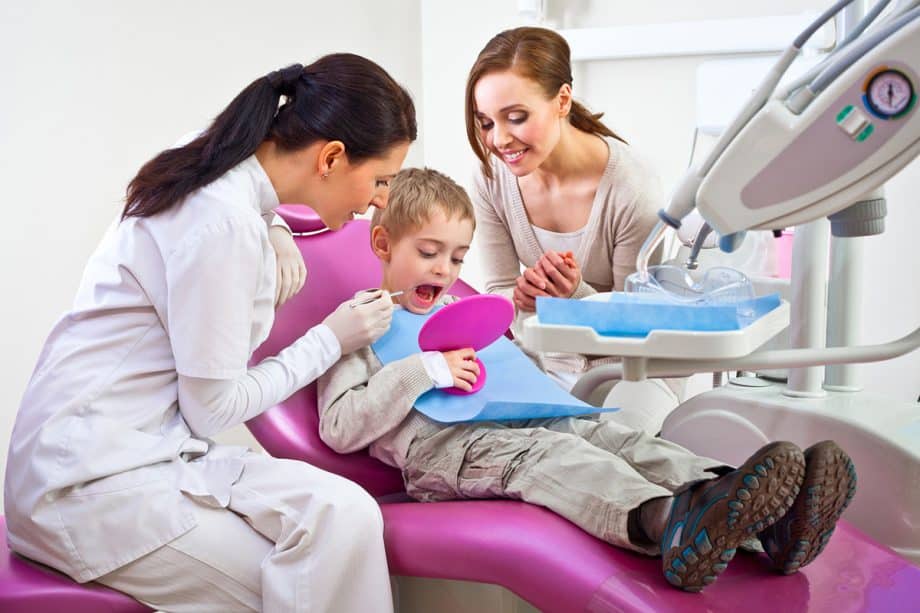Losing a baby tooth too early can disrupt a child's dental development. That's where space maintainers play a crucial role.
Space maintainers hold open the gap left when a primary tooth (aka baby tooth) is extracted prematurely. This prevents surrounding teeth from shifting and causing issues like misalignment or crowding. Our pediatric dental team will describe the different types, both removable and fixed, to find the right fit for your child.
Why are space maintainers necessary?
Space maintainers play a vital preventive role when a child loses a baby tooth prematurely. Without a baby tooth to hold the space, surrounding teeth may shift into the gap. This can cause problems such as crowding, misalignment, and disrupted permanent tooth eruption down the road.
Space maintainers keep the area open after premature extraction. This allows the permanent tooth to emerge in the proper position, maintaining natural alignment and saving the child from extensive orthodontic work later.
However, not every early primary tooth loss requires a space maintainer. The pediatric dentist will evaluate factors like the child's age, the tooth's location, and the permanent tooth timeline to recommend if a space maintainer is appropriate. Their goal is to support healthy dental arch development.
Space maintainers are especially crucial when posterior primary molars are lost ahead of schedule. These back teeth anchor the spacing for permanent teeth. Without a space maintainer, the adjacent molars may tilt into the gap, leaving inadequate room for the permanent molars.
Types of space maintainers
Space maintainers come in two primary categories: removable and fixed. Each offers distinct benefits suited to different cases and ages.
Removable space maintainers are made of acrylic and can include artificial teeth. They are designed to be taken out for cleaning. Removables are often recommended for older children who can reliably care for them. Custom-fit for each child, they are adjustable as the mouth grows.
Fixed space maintainers are cemented or bonded to adjacent teeth for stable, constant placement. They are frequently the preferred choice. Made of durable materials like stainless steel, fixed maintainers provide seamless gap preservation.
How do space maintainers work?
The core function of space maintainers is to hold open areas where primary teeth were prematurely lost. This prevents adjacent teeth from tilting or shifting into the gap as the child grows. Maintaining the space allows permanent teeth to emerge in their natural position.
- Removable space maintainers use clips or hooks to anchor to neighboring teeth, keeping them from moving. This preserves the gap until the permanent tooth is ready to erupt.
- Fixed space maintainers are cemented or bonded to adjacent teeth to supply steady, unmoving support. Their customized fit and bonded position maintain the arch's integrity.
It's important to note space maintainers don't accelerate permanent tooth eruption. Rather, they provide a passive yet crucial role - keeping the space stable until the permanent tooth's natural emergence time.
Restorative and Cosmetic Dentistry for Children
Space maintainers offer tremendous benefits for children's smiles, from sustaining natural tooth positions to minimizing complications. As a proactive measure, they set children up for optimal oral health as they grow.
With a strong understanding of space maintainer types and functions, parents can make informed decisions about their child's oral health. Working closely with a pediatric dentist ensures your child receives appropriate care to maintain dental arch integrity.
To learn more, contact us at 505-888-3520.
Frequently Asked Questions
How long does my child need to wear a space maintainer?
Space maintainers are designed to be worn until the permanent tooth erupts to take the place of the lost primary tooth. This could be for a few months to a few years, depending on the age of the child and location of the missing tooth. Once the permanent tooth begins to emerge, the space maintainer can be removed.
Does a space maintainer hurt?
Having a space maintainer placed does not hurt. Some minor discomfort is normal for a day or two as the child's mouth gets used to the space maintainer. Careful oral hygiene and avoidance of sticky, hard foods can minimize any soreness. Most kids adjust to their space maintainer very quickly.

